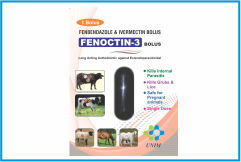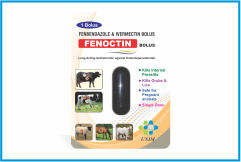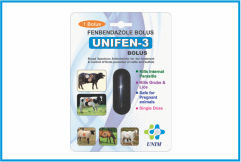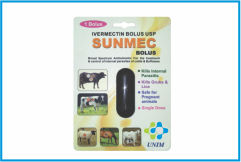Oral Dewormer For Cattle
Many cattle producers understand that gastrointestinal parasites might impair cattle performance and, as a result, take precautions to protect their animals. Anthelmintics (dewormers) are commonly used to control parasites in the gastrointestinal tract. Livestock producers can choose from three types of dewormers: benzimidazoles, macrocyclic lactones, and imidazothiazoles. The benzimidazole and macrocyclic lactone groups of dewormers are the most commonly used in cattle. Macrocyclic lactones are accessible in injectable or pour-on forms, whereas benzimidazoles are commonly taken orally.
Despite the best intentions of cattle producers when it involves treating their animals for intestinal parasites, routine and repeated anthelmintic therapy is certainly contributing to resistance. Dewormer misuse, like antibiotic resistance, accidentally chooses drug-resistant parasites. Dewormer resistance has been well reported in small ruminant production systems, and producers have had to devise techniques to cope with dewormer treatment's drastically reduced efficacy. Data from cattle herds in the southeast United States and other countries indicate that commercially important livestock parasites are acquiring resistance to conventional dewormers.
Investigate grazing methods.
Due to overstocking and overgrazing pastures, animals are forced to graze closer to manure piles, increasing the risk of parasite exposure. Implementing rotational grazing and allowing paddocks to rest for 4-5 weeks can also assist in disrupting the parasite life cycle and reduce exposure risk.
A fecal egg count reduction test on a group of cattle can help producers assess if their current regimen is effective. The concept of the fecal egg count reduction test is to measure dewormer efficacy by counting the number of parasite eggs present in the dung before and after dewormer treatment. A dewormer is deemed effective if it reduces worms by at least 95%. Producers who want to conduct a fecal egg count reduction test should speak with their veterinarian or a local extension agent for more information and instructions.
If producers discover that their present program is ineffective based on the results of a fecal egg count reduction test, they should explore the following practices:
Only "high-risk" animals should be dewormed. Calves and younger cattle (16 months) are among these animals. In general, older cattle develop a tolerance to gastrointestinal parasites and can cope with their presence better than younger animals.
Do not deworm according to the calendar. Cattle should be dewormed only when necessary, not because of the season or time of year. To assess the current parasite load, a single composite fecal egg count can be performed on a group of cattle.
Carry out selective non-treatment. This approach guarantees that there are enough parasites that have not been exposed to an anthelmintic, which aids in the maintenance of a population of sensitive parasites (referred to as "refugia"). In order to adopt this plan, suppliers should deworm all animals in their high-risk groups, with the exception of
Use a variety of treatments. This technique entails administering at least two medications from different classes at the same time (for example, one benzimidazole and one macrocyclic lactone; levamisole and one benzimidazole, etc.). With this technique, parasites that are resistant to one drug class are likely to be vulnerable to the other, reducing selection pressure for resistance to either therapy. This strategy is far more effective than switching between drug classes in managing the development of resistance.
Visit Our Unim Pharma's Website For More Cost Effective Products and Oral Cattle Dewormer

.jpg)





.jpg)

0 Comments